Dose rate distribution of photoneutrons in an ID beamline of SSRF:simulations and measurements
XU Jia-Qiang(徐加強),XIA Xiao-Bin(夏曉彬),,SHENG Yin-Xiang-Zi(盛尹祥子),SHEN Wei-Zu(沈衛(wèi)祖),and XU Xun-Jiang(許潯江)
1Shanghai Institute of Applied Physics,Chinese Academy of Sciences,Shanghai 201800,China
Dose rate distribution of photoneutrons in an ID beamline of SSRF:simulations and measurements
XU Jia-Qiang(徐加強),1XIA Xiao-Bin(夏曉彬),1,?SHENG Yin-Xiang-Zi(盛尹祥子),1SHEN Wei-Zu(沈衛(wèi)祖),1and XU Xun-Jiang(許潯江)1
1Shanghai Institute of Applied Physics,Chinese Academy of Sciences,Shanghai 201800,China
Photoneutrons,emitted by means of photonuclear interactions when gas bremsstrahlung interacts with beamline components,can be another potential radiation source needed to be considered for shielding design and dose assessment of beamline.In this paper,simulations and measurements of photoneutrons dose rate at beamline BL09U are carried out when Shanghai Synchrotron Radiation Facility(SSRF)running at Top-up mode (3.5GeV,235mA).A geometry model is constructed for the beamline BL09U with considerations of the scattering process of the major optical components.The model is compiled into Monte Carlo simulation code FLUKA to calculate photoneutron dose distribution.Measurements of the photoneutrons dose rate were performed by using Environmental Neutron Monitor(ENM).Observation points were arranged uniformly along the inside and outside of the optical enclosure(OE)of BL09U.The calculation results agree with experiments within the measurements uncertainties.It is verified that photoneutrons dose simulation is reliable.The simulation and measurement methods can be applied to evaluate the neutron dose level of other beamline stations,and provide references for the shielding design of the beamlines at SSRF in the near future.
Gas bremsstrahlung,Photoneutron,Monte Carlo simulation,Radiation dose,Synchrotron radiation facility
I.INTRODUCTION
In synchrotron radiation facility,gas bremsstrahlung(GB) is generated by interaction of high energy electrons with residual gas molecules in the vacuum chamber of a storage ring,in which electron beams are circulating.Each straight section of the storage ring with an insertion device(ID)is placed to generate synchrotron radiations,and the GB is like a radiation source of narrow monodirectional photon beam, with an opening angle of justm0c2/E0,and energy spectrum range extends up to thatE0and continuously distributes as 1/E0,wherem0c2is the electronic static energy andE0is the primary electron beam energy[1,2].GB,together with synchrotron radiation source generated at insertion devices,can travel into beamline stations and interact with optical components on the beamline to produce secondary particles.Photoneutrons are produced by photonuclear reaction when photon energy exceeds a certain critical(5–15MeV). There are three main processes in which photoneutrons may be produced by high energy(Eγ)photons:nuclear giant dipole resonance and decay(10MeV<Eγ<30MeV), quasi-deuteron production and decay(50MeV<Eγ<300MeV),and intranuclear cascade and evaporation(Eγ>140MeV)[3].Photoneutrons pose a shielding problem in addition to the secondary radiation of scattered photons and should be taken into account in shielding design,particularly for beamlines extracted from insertion devices placed in the straight sections.
Studies have been made by many researchers on photoneutron generated from gas bremsstrahlung.Earlier calculations of photoneutron yield were mainly based on the track length that photons transport in the target and the cross section ofphotonuclear giant resonance neutrons[4,5],and the photoneutron yield was estimated by a separate post-processing manner rather than in an integrated manner.Experiments were carried out on some high energy accelerators about the photoneutron dose from photonuclear reactions with different targets[3].However,only a single position was chosen for the measurement and only giant resonance neutrons were considered.Shenet al.calculated photoneutron spectrum for all energy ranges only for lead target[6].
In this paper,a typical ID beamline BL09U of Shanghai Synchrotron Radiation Facility(SSRF)is used for photoneutron dose rate study.Each object of this beamline concerned with photoneutrons is taken care.Optical enclosure(OE) with essential optical devices in it,where is the main area photoneuclear interaction takes place,is used to construct geometry model for Monte Carlo simulations.Experiments are performed by using calibrated high sensitivity Environmental Neutron Monitor(ENM)inside and outside of the OE along the beam axis.By these methods,dose distribution of photoneutron at this beamline can be assessed.In the simulations,photoneutrons with full energy range are considered. Dose distribution of photoneutrons is affected by GB intensity and opening sizes of slits,which is also considered by simulation method.
II.METHOD
A.Beamline BL09U
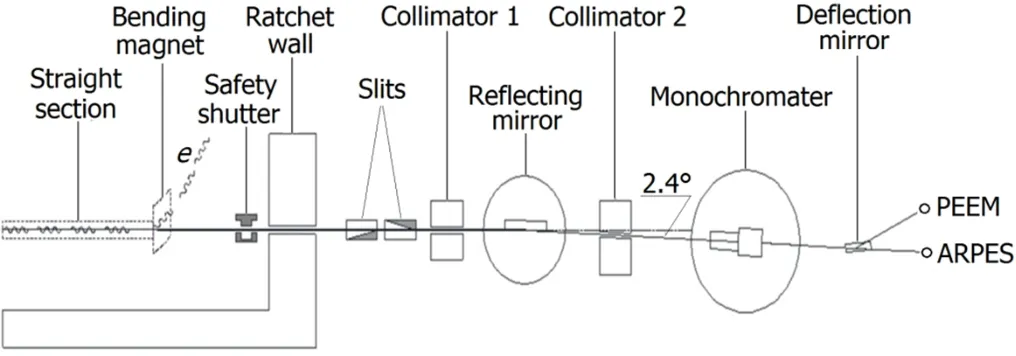
Fig.1.Schematic view of main optical components of BL09U.
Beamline BL09U named as ultra-high resolution wide range photoemission beamline,producing soft X-ray and low power synchrotron radiation.As a schematic view shown in Fig.1,the BL09U has three parts:two switchable insertion devices which installed on a standard section of the storage ring producing radiation source,beamline transferring radiation light,and stations using light for Photo-emission Electron Miscroscopy(PEEM)and Angle Resolved PhotoemissionSpectroscopy(ARPES).Gasbremsstrahlungtransferring in the beamline and interacting with some key components can be illustrated by GB ray-tracing map as shown in Fig.2. Effective length of standard straight section is 12.5m.The distance from center of insert to optical enclosure is 17.8m. The key components from left to right are safety shutter, ratchet wall,slits,collimators,re fl ection mirror,OE hutch wall and monochromater.
B.Simulation of photoneutron dose rate
Photoneutons are produced by three photoneuclear interactions processes when GB transferring in beamline.The transportation is simulated by FLUKA code in this study.The FLUKA code is a fully integrated particle physics Monte Carlo simulation package,which includes whole hadronic and electromagnetic interactions,charged particle tracking, low-energy neutron transport and full tracing of secondaries[7,8].The transportation of GB simulated by FLUKA includes:the production of bremsstrahlung from the straight section,the generation of electromagnetic cascade shower from the interaction between bremsstrahlung and optical devices,and the photoneutron produced in photoneuclear interactions.The photoneutron dose distribution in full energy results from these processes are calculated with the same method given by Pelliccioni M.[9].
Simulations on transportation of GB need conditions described as follow.The electron beams travel in a vacuum tube of 12.5m in length,and move to the next unit of storage ring, a deflection magnet of 1.27T at the end of the straight section.The straight section is of 0.41nTorr in average vacuum, with theZvalue of 3.42 for the residual gases in the storage ring,as shown in Table 1.

TABLE 1.Compositions of residual gas in the storage ring of SSRF
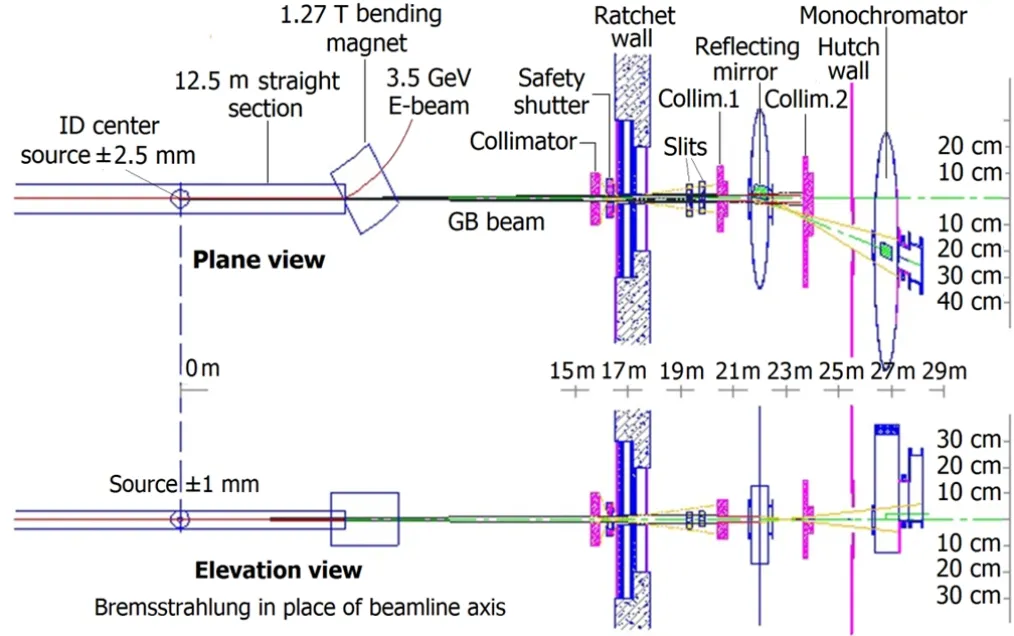
Fig.2.(Color online)Illustration for bremsstrahlung ray-tracing map.
In the simulation,geometry model is constructed including key components of BL09U based on the GB ray-tracing map (Fig.2).The positions of each key components and size of holes are set up according to the bremsstrahlung ray tracing map.The materials and geometry structures of them are included in the simulation model.Other devices such as fi lms window and fl uorescent have minimal effects on scattering photoneutrons,therefore,the in fl uence of them on the calculation results can be ignored.So they are not considered in the geometry model construction.BL09U is now in commissioning,so the slit aperture is 0.5mm×0.5mm for the sake of device protection.The sizes of slits opening at its upper limit 9.0mm×9.0mm is also considered in the simulation.
C.Measurement of photoneutron dose rate
An experiment was carried out at beamline BL09U to verify the simulation method.In this experiment,a high sensitivity neutron detector ENM(Beijing High Energy Radiation Protection Technology Co.)is utilized.The BF3proportional counter tube in ENM is a cylinder(Φ50mm×350mm),600mmHg pressure,and placed in the center of a 6.5-cm wide cylinder polyethylene moderation tube,with the response range of 0.25eV–16MeV,dose rate limit of>1nSv/h,and the sensitivity of detecting neutrons of minute quantity.It is insensible to γ-rays at photon dose rate of<650μSv/h.Its total uncertainty is 11%[10].
The experiment was carried out when the SSRF was running at Top-up mode.The electron beams energy is at 3.5GeV and current is 235mA,with an average beam lifetime of 16h and 0.41nTorr of vacuum in the straight section. The background of neutron dose rate was measured after the closure of the safety shutter at the front end.The background measured was 7nSv/h and 5nSv/h inside and outside the optical enclosure,respectively.By opening the safety shutter, and letting the GB go into the beamline,the neutron dose rate was measured at two sets of seven positions along the beam transmission direction,with the first position placed at 0.6m away from the ratchet wall(Fig.3).Inside the optical enclosure at 0.7m away from the beam axis,and outside the optical enclosure at 0.2m away from the OE wall,seven monitoring points each were arranged,with an interval of 1m betweenthe neighboring points.The ENM detector was placed at each point at the same height of the beam(1.3m).The measurement time for each point is 3–5min.

Fig.3.Arrangement of measurement points in FOE of BL09U.
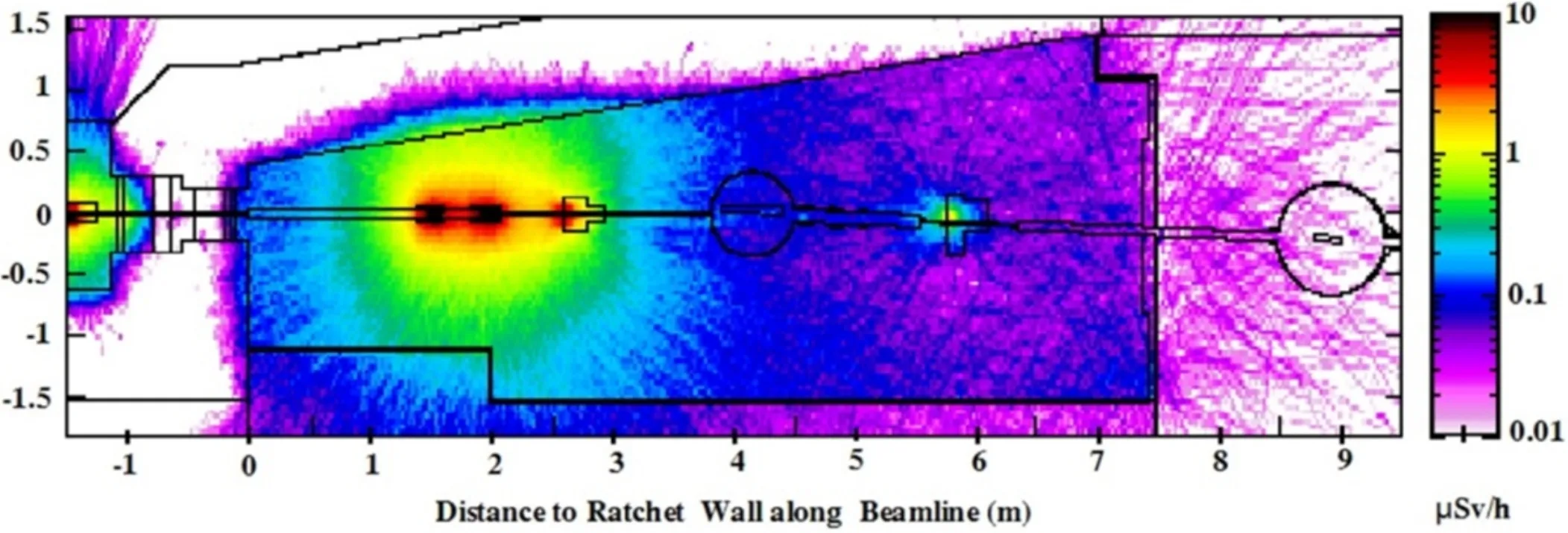
Fig.4.(Color online)Dose rate distribution of photoneutrons in optical enclosure(plane view).
III.RESULTS AND DISCUSSION
The dose distribution of photoneutron by FLUKA simulation is shown in Fig.4.Out of ratchet wall,the photoneutron dose is only found at OE area.The GB losses energy mainly on the slit(here the slit aperture is 0.5mm×0.5mm).Photoneutron is produced from high energy photon interacting with slits made of copper,and the dose rate of photoneutron is of isotropic distribution centered on the slits.It’s more than 10μSv/h on the slits,but at a distance of 0.7m away from the center it drops to 0.6μSv/h.Out of the GB hutch wall,dose rate of photoneutron is about 0.15μSv/h.Photoneutron spectrum emitted from slits is also given by FLUKA simulation (Fig.5).The photoneutron spectrum has peak at 1–2MeV, whichmeansthegiant resonanceinteractiondominatesinthis case.The energy range of ENM detector is 0.25eV–16MeV, which means the major part of neutrons detected by ENM are giant resonance neutrons.To make the results of simulation and measurement be comparable,the dose distribution of photoneutrons produced from nuclear giant dipole resonance and decay was also calculated.The measurement and simu-lation results are shown in Fig.6.
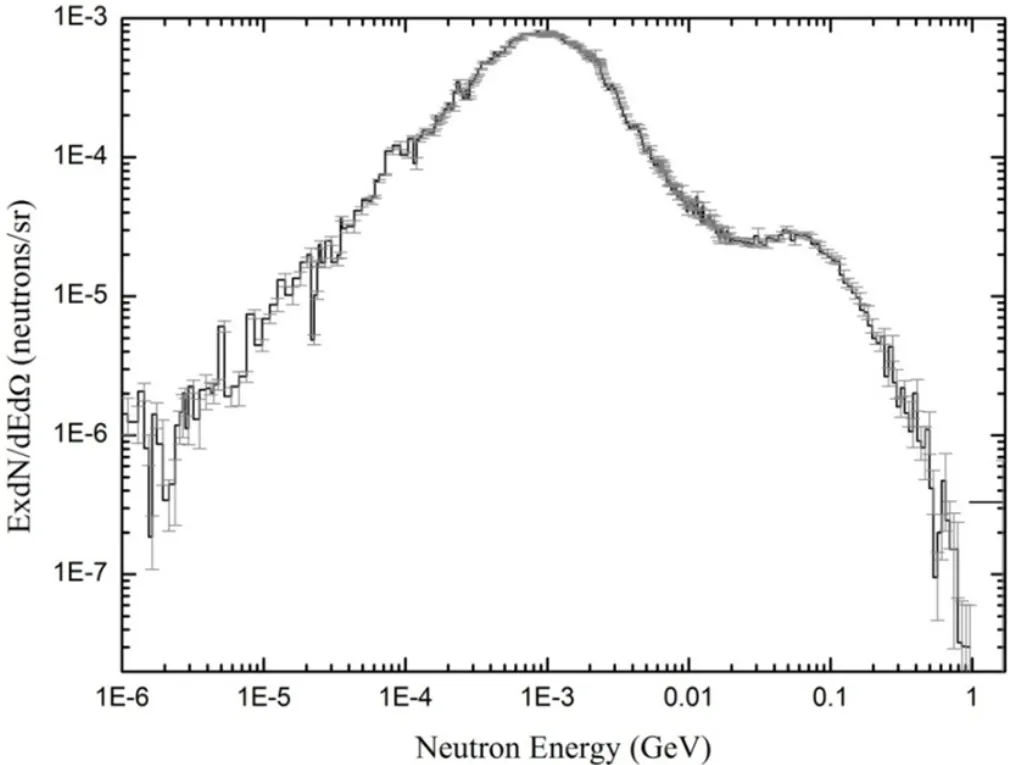
Fig.5.Statistics of the neutron spectrum produced from the slits.

Fig.6.Neutron dose rate inside the optical enclosure 0.7m away from the beam axis(a)and outside the optical enclosure(b).
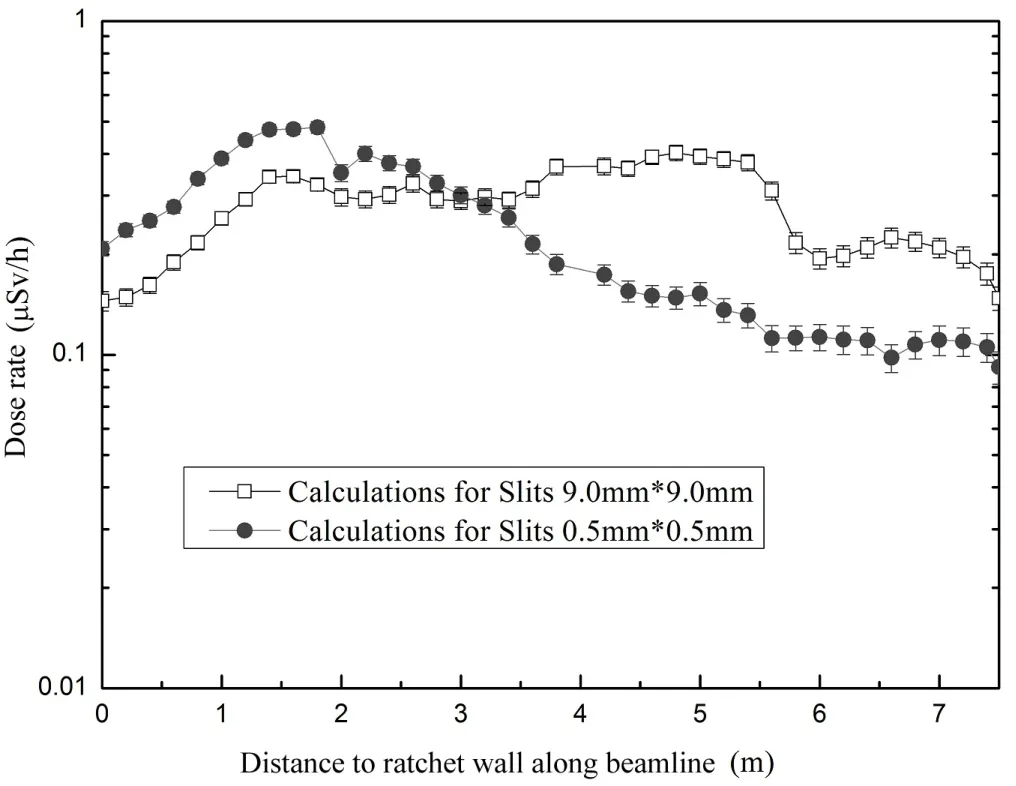
Fig.7.Dose rate at slit apertures of 0.5mm×0.5mm and 9.0mm×9.0mm.
Figure 6(a)shows the results inside the optical enclosure. The measurement results are in good agreement with the dose rate calculated for the giant resonance neutrons only.Larger differences(<32%)can be found in the low dose rate region, such as the data points near the end of optical enclosure(at 5.5–6.5m),the reason is that statistical error of calculation and uncertainty of measurement become more important at low levels of the neutron dose.The giant resonance neutrons contribute about 83%of the results of all neutrons.
In Fig.6(b),the results outside the optical enclosure show the same trend as the results in Fig.6(a).The calculated dose rates for giant resonance neutrons also agree well with the experimental results.The giant resonance neutrons contribute about 78%of the results of all neutrons.
Dose rate simulated at slits apertures 0.5mm×0.5mm and9.0mm×9.0mmareshowninFig.7.Here,theGBisset at the highest intensity when electron beam current intensity is of 300mA and the vacuum is of 1nTorr in straight section.
IV.CONCLUSION
In this study,photoneutron doses inside and outside the optical enclosure of the typical ID beamline BL09U of SSRF at its Top-up mode were simulated and measured.The calculation results agree well with the experimental results,indicating that the simulation of photoneutron doses by using FLUKA code is reliable.The simulation and measurement methods can be applied to evaluate the neutron dose level of other beamline stations,and will provide references for the shielding design of the following beamlines at SSRF in the near future.
ACKNOWLEDGMENTS
The authors would like to thank the staffs of BL09U group of SSRF for their help in the measurements.
[1]Rindi A.Health Phys,1982,42:187–193.
[2]Pisharody M,Job P K,Magill S,et al.Nucl Instrum Meth A, 1997,401:442-462.
[3]PisharodyM,SemonesE,JobPK.NuclInstrumMethA,1999,430:542–558.
[4]Sheu R J,Wang J P,Sheu R D,et al.Nucl Instrum Meth B, 2004,217:555–563.
[5]AsaiJandHirayamaH.NuclInstrumMethA,2004,527:264–272.
[6]Liu J C,Nerson W R,Kase K R,et al.Radiat Prot Dosim,1997,70:49–54.
[7]Fasso A,Ferrari A,Sala P R.Electron-photon transport in FLUKA:status,Proceedings of the Monte Carlo 2000 Conference,Lisbon,Oct.23–26,2000.
[8]Fasso A,Ferrari A,Ranft J,et al.FLUKA:status and prospective for hadronic applications,Proceedings of the Monte Carlo 2000 Conference,Lisbon,Oct.23–26,2000.
[9]Pelliccioni M.Radiat Prot Dosim,2000,88:279–297.
[10]Li J P,Tang Y L,Liu S D,et al.Radiat Prot Dosim,1996,67: 179–185.
10.13538/j.1001-8042/nst.25.050101
(Received March 19,2014;accepted in revised form April 23,2014;published online October 6,2014)
?Corresponding author,xiaxiaobin@sinap.ac.cn
 Nuclear Science and Techniques2014年5期
Nuclear Science and Techniques2014年5期
- Nuclear Science and Techniques的其它文章
- The effect of Nb additive on Te-induced stress corrosion cracking in Ni alloy:a fi rst-principles calculation?
- Development and testing of the code for automatic generating of multi-temperature continuous-energy neutron cross section libraries?
- Steady thermal hydraulic characteristics of nuclear steam generatorsbased on the drift flux code model?
- A method of estimating and subtracting the hydrogen background in the natural carbon target used in the12C+12C experiment?
- Density functional theory study of H,C and O chemisorption on UN(001)and(111)surfaces?
- The extraction and smoothing algorithms for γ-ray spectrum of a CdZnTe detector system
